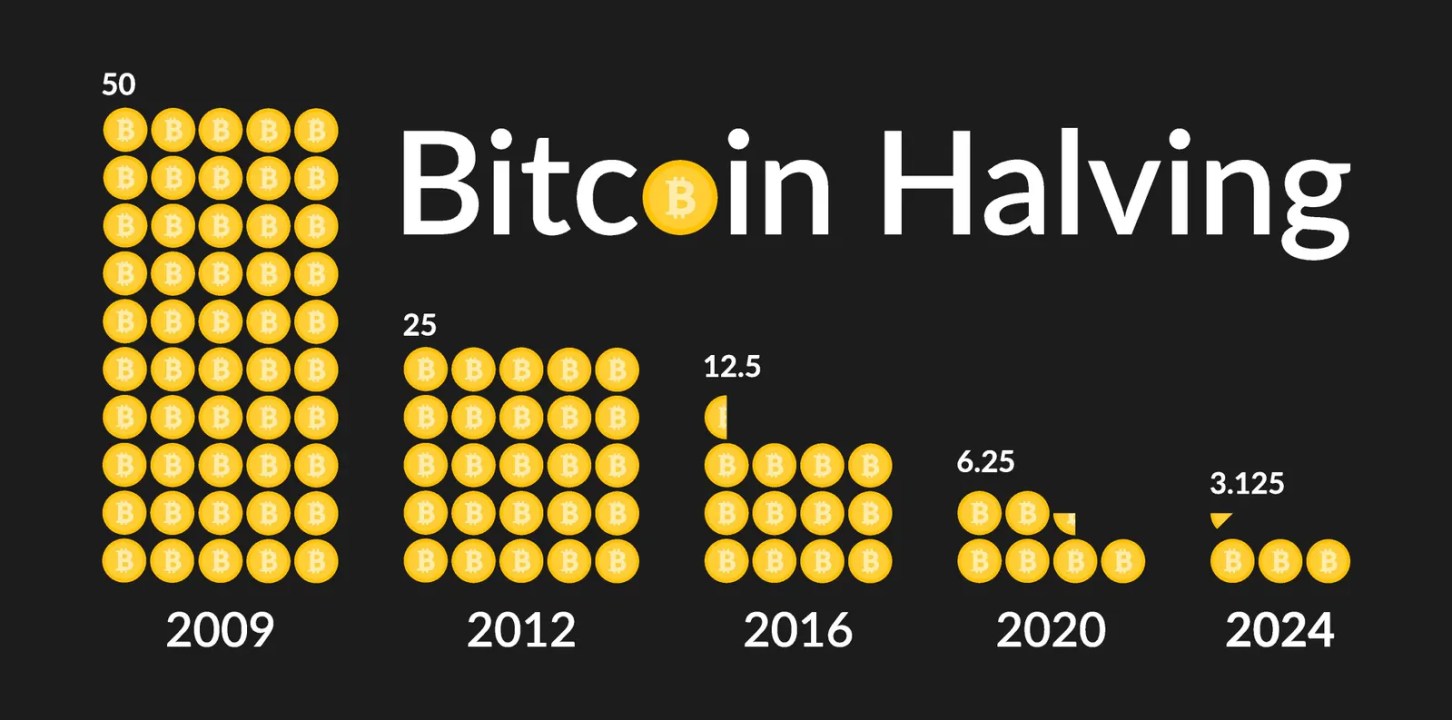Bitcoin (BTC) has completed its fourth halving event following the creation of its 840,000th block.
Following the halving, Bitcoin miners will now earn 3.125 BTC for each block they mine, a decrease from the previous reward of 6.25 BTC.
The price of the cryptocurrency has gained 3.7% in the last 24 hours, currently trading just below $64,000 with 0.5% gained in the last hour. The halving reportedly occurred at 12:10 GMT, with the crypto trading at $63,900 at that point.

In the past, halvings have been followed by a significant appreciation, and while Bitcoin was already on a roll, having started the year at $42,200, soaring 75% to reach a new all-time high of $73,737.94 on March 14 2024 there is expectation of further price appreciation.
According to a GrayScale analysis, the reduction in rewards is expected to necessitate comparatively less buying pressure to sustain prices, potentially leading to upward price movement due to increased demand.
We are here (orange circle)$BTC #Bitcoin #BitcoinHalving pic.twitter.com/TqVkdnPeIk
— Rekt Capital (@rektcapital) April 19, 2024
Before today, Bitcoin has experienced three halving events:
- The first halving occurred in 2012, decreasing the subsidy from 50 BTC to 25 BTC
- Subsequently, in 2016, the subsidy was further reduced to 12.5 BTC.
- The most recent halving took place on May 11, 2020, bringing the subsidy down to 6.25 BTC.
The halvings are designed to happen automatically every 210,000 blocks, which translates to approximately every four years. When a halving occurs, miners see a 50% reduction in the number of bitcoins they receive as a reward for mining and adding blocks to the blockchain.
Despite this reduction, miners still earn transaction fees for each block they mine as usual.
Moreover, analysts say that Bitcoin’s technical fundamentals and use cases have significantly increased. Notably, the Bitcoin blockchain has witnessed the introduction of ordinal inscriptions and BRC-20 tokens, innovations that respectively introduced non-fungible tokens, and fungible tokens that were previously only possible on chains like Ethereum.
[EXPLAINER] What Are Bitcoin Ordinals (NFTs on the Bitcoin Blockchain) and How Do They Work
Are #Bitcoin Ordinals an upgrade to #NFTs on the Ethereum Network due to their true on-chain nature?https://t.co/WnKUyasPm0 pic.twitter.com/71rT3Vekhz
— BitKE (@BitcoinKE) March 12, 2023
Inscriptions and BRC-20 tokens have re-invigorated on-chain engagement and activity in the form of increased transactions on the network, and greater miner fees.
The latest development on the network is the introduction of Runes protocol, another token standard causing excitement among some members of the Bitcoin community. This latest protocol, which launched alongside the halving, is said to be a more efficient and an easier way to create altcoins on Bitcoin.
“The timing is no coincidence. The Runes Protocol will stir up a significant amount of on-chain activity that will increase Bitcoin’s network fees which will help offset the decrease of the miner reward from the halving,” says Leonidas one of its proponents.
________________________________________







